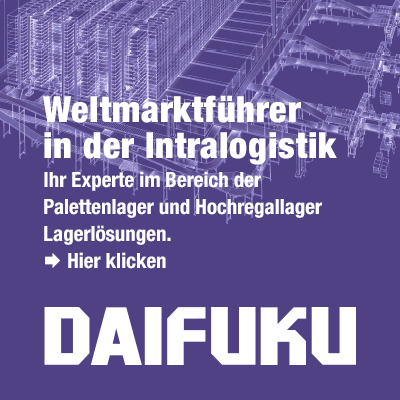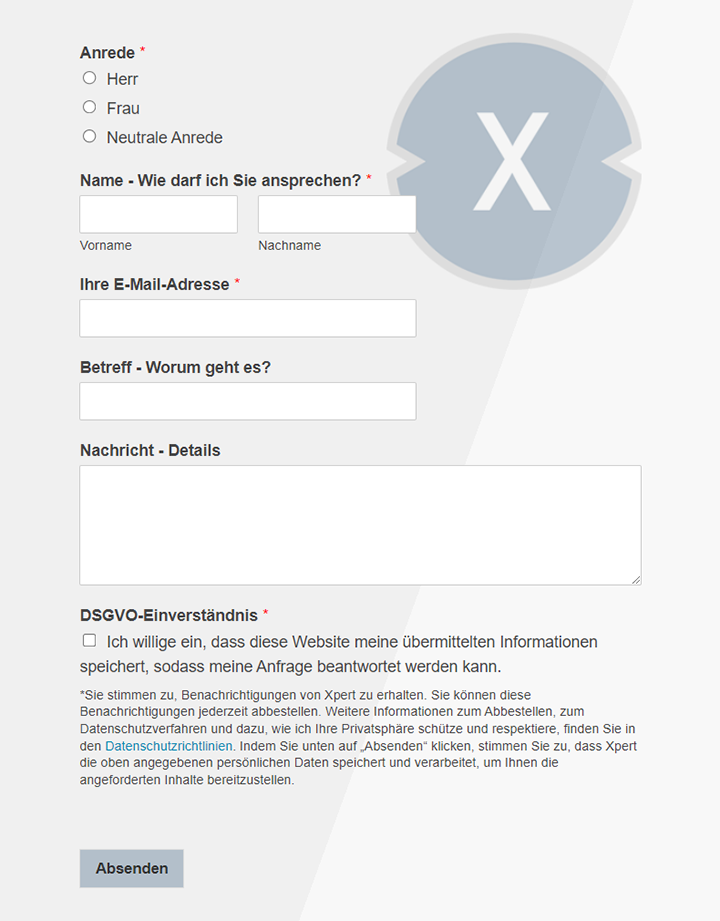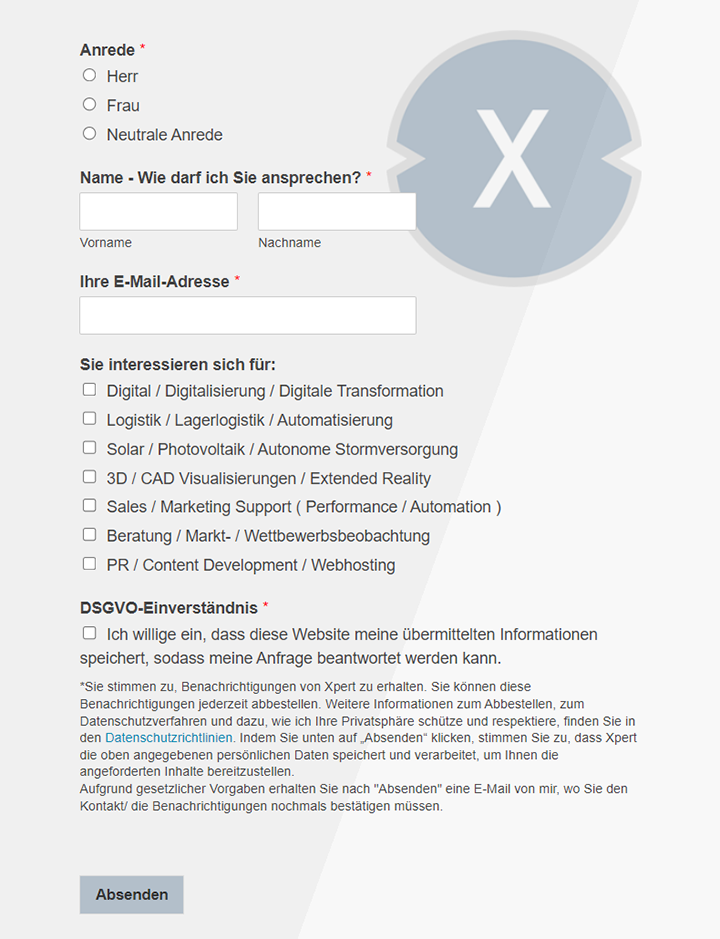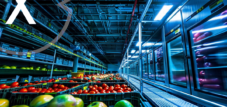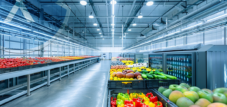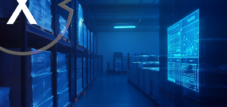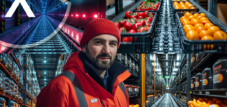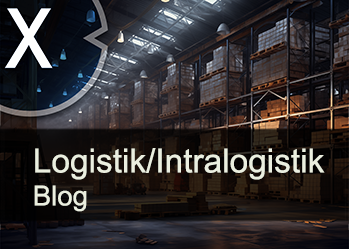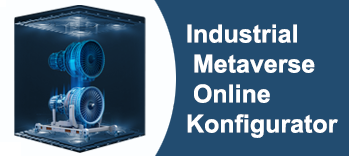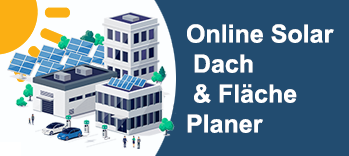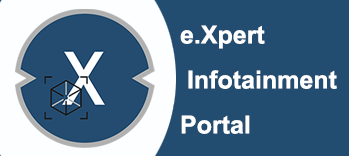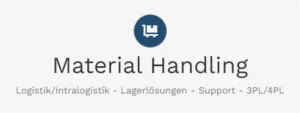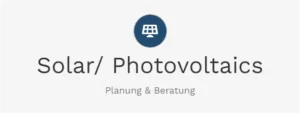The roadmap to the autonomous autopilot cooling chain: digital transformation of the cold chain with AI, IoT and blockchain as key technologies
Xpert pre-release
Language selection 📢
Published on: February 17, 2025 / update from: February 17, 2025 - Author: Konrad Wolfenstein

The roadmap to the autonomous autopilot cooling chain: digital transformation of the cold chain with AI, IoT and blockchain as key technologies-Image: Xpert.digital
Cstemty chain logistics in autopilot mode: How AI, IoT and Blockchain shape the future
The roadmap for autonomous cooling chain logistics: digital transformation with AI, IoT and blockchain
The modern cold chain logistics is at a turning point. The combination of artificial intelligence (AI), the Internet of Things (IoT) and blockchain technology creates new opportunities to significantly increase efficiency, transparency and sustainability. These innovations not only transform existing processes, but also pave the way for an “autopilot cooling chain logistics” with autonomous storage, optimized transport routes and intelligent contract structures.
Artificial intelligence and mechanical learning: the neuronal control of cooling chain logistics
Automated process optimization in warehouses
AI-supported warehouse management systems optimize different operational parameters in real time, including:
- Inventory management: Predictive algorithms analyze seasonal fluctuations and reduce storage costs.
- Employee control: Wearable data recognize fatigue and optimize the application planning.
- Energy consumption: AI models predict the cooling requirements based on weather and delivery data.
An example from Florida shows that the intelligent cluster formation of picking orders reduced the path times by 47 %, while energy consumption dropped by 22 % at peak times.
Predictive maintenance for an uninterrupted cold chain logistics
Modern sensor technologies and machine learning can proactively prevent operational disorders. By analyzing sensor data such as vibration, electricity consumption and refrigerant pressure, maintenance cycles were optimized and downtimes reduced by 73 %. In addition, the “Mean Time Between Failures” (MTBF) was increased from cold systems from 1,200 to 2,800 hours.
Route optimization: efficiency and sustainability in transport
A hybrid optimization algorithm combines genetic programming with simulated annealing to calculate the best possible transport routes. This takes into account:
- Temperature maintenance: a maximum deviation of 0.5 ° C for temperature -sensitive goods such as vaccines.
- Fuel efficiency: optimization of the routes based on topography and traffic forecasts.
- CO2 reduction: Sustainable logistics as part of ESG guidelines.
- Punctuality: a delivery accuracy of 99.3 % in the fresh goods area.
In a pilot study with 200 trucks, empty trips could be reduced from 24 % to 7 % and energy consumption was reduced by 18 %.
IoT and RFID: The sensory nervous system of cold chain logistics
Real-time temperature monitoring with IoT sensors
Measure and monitor high-precision IoT sensors and monitor the temperature along the entire cold chain logistics. These sensors offer:
- A measurement accuracy of ± 0.1 ° C,
- Autonomous calibration to ensure reliable measured values,
- Integration of vibration patterns for the quality assessment of the transported goods.
The data is continuously analyzed, which means that potential deviations are recognized and reported in real time.
RFID technology for continuous transparency
RFID tags and IoT gateways create a digital twin system for pallets. Here, movements, storage times and quality indicators are automatically recorded and managed. This leads to an almost error -free traceability with an accuracy of 99.4 %.
Edge computing: decentralized processing of sensor data
Fog computing nodes can be processed on site, which drastically shortened reaction times. Critical events, such as temperature deviations, can be recognized in a few seconds and appropriate measures can be initiated.
Blockchain: Security and transparency in cold chain logistics
Blockchain-supported traceability
A decentralized blockchain architecture enables manipulation-proof storage of transport and temperature data. This improves food safety and shortens the traceaculation period of contaminated products from several days to a few seconds.
Smart contracts for automation of compliance
Automated contracts check in real time compliance with regulations, e.g. B. HACCP and GdP guidelines, and carry out automatic escalation processes for regular violations.
Ticking of quality data
Product qualities can be demonstrably documented by means of non-fungable tokens (NFTS). For example, these NFT certificates could contain the following information:
- Genetic fingerprints of organic meat,
- Spectral analyzes of pharmaceutical ingredients,
- Proof of sustainability along the entire supply chain.
The autopilot cooling chain logistics: a fully automated future
The future of cold chain logistics lies in a fully autonomous and highly intelligent infrastructure. This includes:
- Autonomous cooling bearings with self -learning robot fleets and digital twins for capacity optimization.
- Self-driving means of transport with AI-controlled route optimizations and automated load securing.
- Drone-based deliveries with precise GPS navigation and blockchain-based access control.
Economic and environmental impacts
According to forecasts, autonomous cooling chains could bring the following advantages by 2030:
- Reduction of operating costs by 40-50 %,
- Minimization of transaction costs by 85 % by blockchain solutions,
- Delivery accuracy of almost 100 %,
- Maximum ESG compliance through sustainable transport planning.
The further development of cold chain logistics
The combination of AI, IoT and blockchain leads to completely autonomous and efficient cooling chain logistics. While current technologies already enable significant productivity increases, the next stage of development will be carried out by the use of quantum computing and neuromorphic chips. Companies that invest in these innovations at an early stage are at the top of the industry as pioneers in autonomous logistics.
Xpert partner in warehouse planning and construction
Our recommendation: 🌍 Limitless reach 🔗 Networked 🌐 Multilingual 💪 Strong sales: 💡 Authentic with strategy 🚀 Innovation meets 🧠 Intuition
At a time when a company's digital presence determines its success, the challenge is how to make this presence authentic, individual and far-reaching. Xpert.Digital offers an innovative solution that positions itself as an intersection between an industry hub, a blog and a brand ambassador. It combines the advantages of communication and sales channels in a single platform and enables publication in 18 different languages. The cooperation with partner portals and the possibility of publishing articles on Google News and a press distribution list with around 8,000 journalists and readers maximize the reach and visibility of the content. This represents an essential factor in external sales & marketing (SMarketing).
More about it here:
Autonomous cooling chains: The way to the fully automated supply chain of the future - background analysis
IoT & Blockchain: The key to more efficiency and sustainability in the cold chain
The cooling chain logistics, a backbone of our global food and pharmaceutical industry, stands for a profound transformation on the threshold. The traditional, often manual and fragmented processes are increasingly replaced from a paradigm change to a fully digitized, intelligent and autonomous chain of value. The focus of this revolution is three key technologies: artificial intelligence (AI) and machine learning (ML), the Internet of Things (IoT) with its ubiquitous sensors, and blockchain technology, which ensures transparency and unchangeable data security.
The dynamics of this development are underpinned by impressive examples and forecasts. The partnership between Realcold and Blue Yonder illustrates how AI-controlled warehouse management systems (WMS) not only automate storage processes, but can also implement considerable savings of up to 35 % in operating costs through predictive analyzes and intelligent resource allocation. These increases in efficiency are not only a profit for individual companies, but also contribute to global sustainability by protecting resources and reducing food waste.
The European cold chain market, an important indicator of global development, will experience growth of $ 76.8 billion by 2028. A major driver of this growth are IoT solutions that enable real-time monitoring of the temperature in the entire supply chain. This complete control is crucial because temperature fluctuations can lead to considerable product losses. Due to the early detection and correction of temperature deviations, IoT systems can reduce product losses by an estimated 20-30 %, which is of enormous importance both economically and ecologically.
Blockchain technology, originally known through cryptocurrencies such as Bitcoin, unfolds its potential in the cold chain, especially in the area of traceability and transparency. Initiatives such as IBM Food Trust impressively show how Blockchain can drastically shorten the backing time of contaminated food. While traditional methods often take days to determine the origin and distribution of contaminated products, blockchain enables almost instant tracking in second fractions. In the case of IBM Food Trust, the trial period from an average of 7 days was reduced to an impressive 2.2 seconds. This speed is crucial to minimize health risks, to avoid large -scale recall actions and to strengthen consumers' trust in food safety.
These three technologies-AI, IoT and blockchain-are not isolated innovations, but converge into a common vision: the “autopilot cooling chain”. This vision describes a future in which autonomous warehouse robots, self -optimizing transport routes and self -management smart contracts manage the entire supply chain without or with minimal human intervention. The autopilot cooling chain is more than just an increase in efficiency; It is a fundamental redesign of the cold chain logistics based on resilience, sustainability and unprecedented transparency.
Artificial intelligence and machine learning: the brain of the intelligent cold chain
Artificial intelligence and machine learning form the neural network that drives the autonomous cold chain. They enable systems to learn from data, to recognize patterns, make predictions and to optimize decisions in real time. In cooling chain logistics, this manifests itself in a variety of applications that range from dynamic process optimization in warehouses to predictive maintenance and intelligent route planning.
Dynamic process optimization in warehouses: efficiency through adaptivity
In modern cooling stores, which often represent complex and dynamic environments, AI-controlled warehouse management systems play a central role. These systems use Reinforcement Learning, a method of machine learning, in which an agent (in this case the WMS) learns to make optimal decisions through interaction with its surroundings. The system continuously analyzes a variety of real -time data in order to adaptively adapt the task prioritization and resource allocation. The most important data points include:
Fluctuations
The cooling chain logistics are often characterized by considerable seasonal fluctuations, especially in frozen products in which variations of 20-30 % or more are not uncommon. AI systems analyze historical sales data, weather forecasts and current market trends to precisely predict future fluctuations. This predictive ability makes it possible to optimally plan storage capacity and personnel resources and avoid bottlenecks or excess stands. In addition, AI systems can dynamically assign storage spaces to minimize the picking trails and maximize the envelope speed.
Employee capacities and state
The efficiency of warehouse processes depends largely on the performance of the employees. Modern AI systems integrate wearable data to monitor the condition and fatigue of employees in real time. Sensors in wearables can measure heart rate, body temperature and activity levels, for example. This data is analyzed to recognize overload and dynamically adapt work plans. By avoiding fatigue and optimizing work processes, productivity can be increased and the risk of work accidents can be reduced. In addition, AI systems can intelligently distribute tasks, for example by assigning more complex tasks to experienced employees and have easier activities done by less experienced forces or automated systems.
Energy consumption patterns and forecasts
Cooling bearings are energy -intensive facilities and the energy costs make up a significant part of the operating costs. AI systems analyze historical energy consumption patterns in connection with weather data, delivery plans and inventory data in order to precisely predict the future cooling requirements. Based on these forecasts, the cooling capacity can be controlled depending on the load, which avoids unnecessary cooling performance and thus energy waste. In times of low loads, the cooling capacity can be reduced, while it is raised in good time in the event of expected point loads. In addition, AI systems can identify optimization potential in the interaction of various cooling units and choose the most efficient mode of operation.
A specific case study from Florida demonstrates the effectiveness of this dynamic process optimization. By using AI-based cluster formation of picking orders, the path times in a cooling store could be reduced by an impressive 47 %. At the same time, the cooling costs were reduced by 22 % by intelligent, load -dependent compressor control. These results illustrate the enormous potential of AI to increase efficiency and reduce operating costs in cooling stores.
Predictive maintenance: minimize downtimes, reduce costs
The predictive maintenance, another field of application from KI and ML, aims to predict failures of cooling units and other critical components in the cold chain and to initiate preventive maintenance measures before there are costly failures. Modern cooling units are equipped with a variety of sensors that continuously capture data on vibrations, current absorption, refrigerant pressure, temperature and other relevant parameters. These sensor data are transferred to a central cloud platform, where they are compared with extensive historical failure patterns. Blue Yonders Cloud platform, for example, accesses a database with over 500,000 historical failure patterns in order to recognize anomalies and potential failures at an early stage.
In a realcold application in Texas, considerable improvements could be achieved by using predictive maintenance:
Increase the MTBF (Mean Time Between Failures)
The average operating time between failures (MTBF) of cold systems was more than doubled from 1,200 to 2,800 hours. This significant increase in reliability not only reduces downtime, but also extends the lifespan of the systems and reduces the maintenance costs in the long term.
Reduction of unplanned downtime
Unplanned downtime, which often leads to production interruptions and product losses, could be reduced by 73 %. Due to the early detection of potential failures, maintenance work can be planned and carried out before an actual failure occurs. This minimizes production tilts and ensures smooth operation of the cold chain.
Optimization of spare parts orders
AI-supported demand forecasts enable more precise planning of spare parts orders. By analyzing maintenance historia, failure patterns and predicted default probabilities, AI systems can automatically trigger the need for spare parts and orders. This optimizes the warehousing of spare parts, reduces storage costs and ensures that required parts are available in good time in order to be able to carry out maintenance work efficiently. In the Realcold application, the efficiency of spare parts orders was increased by 35 %.
Route optimization under multiple constraints: Intelligent navigation for temperature -critical goods
The transport logistics in the cold chain represent special challenges, since in addition to the usual logistical parameters such as delivery time and costs, compliance is also of crucial importance. AI-supported route optimization systems take into account a variety of constraints to plan optimal transport routes that ensure the temperature integrity of the goods and maximize efficiency. A hybrid algorithm that combines genetic programming with simulated annealing has proven to be particularly effective in order to solve these complex optimization tasks. This algorithm also optimizes the following parameters:
Temperature maintenance
Compliance with the closest temperature ranges is essential for temperature -sensitive products, especially in the pharmaceutical sector. In the case of pharmaceutical transports, maximum temperature deviation (δt) of less than 0.5 ° C is often required. The route optimization system takes weather conditions, route profiles and the thermal properties of the transport vehicles into account to choose routes that maximize temperature stability. This can include, for example, avoiding route sections with extreme solar radiation or the use of routes with cheaper climatic conditions.
Fuel efficiency
Fuel costs are an essential cost factor in transport logistics. The route optimization system takes into account topography, traffic forecasts and speed limits in order to plan fuel -efficient routes. Slims are avoided, optimal speeds are chosen and convert traffic jams to minimize fuel consumption and at the same time to comply with the delivery times.
CO2 balance and sustainability (ESG reporting)
Sustainability aspects are becoming increasingly important in logistics. The route optimization system integrates multi-object optimization in order to take into account ecological goals in addition to economic. Minimizing the CO2 footprint is a central concern. The system selects routes that minimize fuel consumption and thus the CO2 emissions. In addition, alternative fuel options and more environmentally friendly means of transport can be included in the optimization. The detailed recording and analysis of CO2 emissions enables comprehensive ESG reporting (Environmental, social, governance) and supports companies in fulfilling their sustainability goals.
Delivery time window and punctuality
Compliance with agreed delivery time window is of the highest priority in cold chain logistics, especially when transporting fresh goods. For example, a delivery accuracy of 99.3 % is often required for the transport of fresh meat. The route optimization system takes into account traffic forecasts, construction site information and historical delivery data in order to calculate realistic delivery time windows and plan routes that ensure punctual delivery. In the event of unforeseen events such as traffic jams or accidents, the system can calculate alternative routes dynamically and adjust the delivery times in real time.
A pilot study with 200 trucks in Texas demonstrated the performance of this AI-based routing system. By using the system, the number of empty trips could be reduced from 24 % to 7 %, while energy consumption was reduced by 18 % at the same time. These results underline the potential of AI to optimize transport logistics in the cold chain, to reduce costs and to improve sustainability.
IoT and RFID: The sensory nervous system of the cold chain
The Internet of Things (IoT) and Radio frequency Identification (RFID) form the sensory nervous system of the cold chain. IoT sensors continuously record data on temperature, humidity, vibrations, location and other relevant parameters in the entire supply chain. RFID technology enables the automatic identification and persecution of products and pallets. The combination of these technologies creates a complete transparency and real -time monitoring of the cold chain, which is essential to ensure product quality and food safety.
Real-time temperature monitoring with self-calibrating sensors: precision and reliability
Modern IoT sensors, such as the SmartSense T7 from Digi, are highly developed devices that enable precisely and reliable temperature monitoring in the cold chain. These sensors combine a number of advanced technologies:
PT1000-temperature sensor with high accuracy
PT1000 sensors are platinum resistance thermometers that are known for their high accuracy and stability. The SmartSense T7 achieves a temperature accuracy of ± 0.1 ° C, which is essential for the monitoring of temperature -sensitive products such as pharmaceuticals and high -quality food.
MEMS moisture sensors: In addition to the temperature, the air humidity also plays an important role in the product quality in the cold chain. MEMS moisture sensors (micro-electro mechanical system) enable precise measurement of the relative humidity in the range of 0-100 % RF with an accuracy of ± 1.5 %. The control of the humidity is particularly important for storing and transporting fruit, vegetables and other fresh products to avoid condensation and mold formation.
Triaxial acceleration sensors for shock detection
Vibrations and bumps during transport can lead to damage of sensitive products. Triaxial acceleration sensors record accelerations in three spatial directions and enable the detection of bumps and vibrations. This data can be used to identify improper handling, document damage and optimize transport processes to minimize product damage.
Lorawan Connectivity with great reach and energy efficiency
Lorawan (Long Range Wide Area Network) is a radio technology that is characterized by its large reach (up to 10 km) and its low energy consumption. This enables reliable data transmission of sensors in the entire cold chain, also in remote areas or in environments with difficult radio conditions. Lorawan's energy efficiency enables a long battery life of the sensors, which reduces the maintenance effort.
In practical use, these modern IoT sensors offer a number of advantages:
256-hour buffering of measurement data in the event of a network failure
If the network connection fails, the sensors can save measurement data locally for up to 256 hours. As soon as the connection is restored, the buffered data is automatically transferred to the cloud platform. This also ensures a complete data recording for temporary communication interruptions.
Autonomous calibration using reference platinum resistors
Regular calibration is required to ensure the long -term accuracy of the sensors. Modern sensors have autonomous calibration mechanisms that use reference platinum resistances in order to automatically check the sensor career and to adapt if necessary. This reduces the maintenance effort and ensures that the sensors provide precisely measured values over their entire lifespan.
Predictive Quality Analytics by correlating vibration patterns with product quality
The recorded vibration data can not only be used for shock detection, but also for predictive quality analytics. By analyzing vibration patterns, conclusions can be drawn about product quality. Certain vibration patterns can indicate, for example, the beginning damage of sensitive products. Due to the early detection of such patterns, preventive measures can be initiated to avoid major damage.
RFID integration for complete transparency: digital twins for pallets and products
The integration of RFID technology (radio frequency identification) into the cold chain enables continuous transparency and traceability of products and pallets. Rain RFID-Tags (UHF Gen2V2) and IoT gateways combine the physical and digital world with a digital twin system. Two main types of RFID tags are used in the cold chain, which differ as follows:
- Passive RFID tags have a range of 8 to 12 meters, a static update interval and a passive energy concept. They cost 0.10 to 0.50 euros per unit.
- Active BLE sensors, on the other hand, offer a range of 50 to 100 meters, an update interval of 15 seconds to 10 minutes and use a battery with a term of five years. These sensors are significantly more expensive, with costs of 15 to 30 euros per unit.
Passive RFID tags
Passive RFID tags are inexpensive and do not require your own power supply. They are activated by the energy of the reader and then send your clear identification number back. Passive RFID tags are well suited for applications where cost-effective mass identification is required, such as: B. the labeling of pallets or individual products. However, their range is limited to 8-12 meters and you cannot record real-time data such as temperature or location.
Active BLE sensors
Active BLE sensors (Bluetooth Low Energy) have their own power supply (battery) and can continuously record and send data. You have a larger range (50-100 meters) as a passive RFID tags and can measure real-time data such as temperature, humidity, location and vibrations. Active BLE sensors are suitable for applications in which detailed real-time monitoring and a larger range are required, such as: B. the persecution of temperature -sensitive goods during transport or monitoring cooling containers.
A typical application scenario at Realcold illustrates the advantages of RFID integration:
RFID tags in every pallet.
When storing into the cooling warehouse, each palette is provided with an RFID day. This day stores information such as the time of storage, the origin of the product, the product type and, if necessary, batch information. This data is automatically recorded and transferred to the Warehouse management system.
Gateway nodes on cooling zone crossings track movement currents
IoT gateways are installed at the transitions between different cold zones in the warehouse. These gateways automatically record the RFID tags of pallets that pass these zones. As a result, the movement currents of the goods in the warehouse are pursued in real time. The system knows at any time where which palette is and how long it has been in which cooling zone.
Machine learning models recognize anomalies in the flow of goods
The recorded movement data is analyzed by machine learning models in order to recognize anomalies in the flow of goods. For example, unexpected delays, detours or leaving defined storage areas can be recognized as anomalies. The system can automatically trigger alarms when anomalies are recognized so that warehouse staff can intervene in good time and remedy potential problems. In practice, the accuracy of anomaly detection by machine learning models achieves values of 99.4 %.
EDGE computing architectures for real-time decisions: Intelligence on the sidelines of the network
Edge Computing, also called FOG Computing, brings computing power and data processing closer to the location of data production, ie the “edge” of the network. In the cold chain, this means that IoT gateways and sensors not only collect data, but also take over part of the data processing directly on site. FOG computing nodes, such as the Dusun DSGW-380, are powerful devices that are equipped with multi-core processors, integrated databases and regular engineering.
Advantages of Edge Computing in the cold chain:
Reduced latency times and faster response times
By pre -processing sensor data directly on site, latency times are reduced and reaction times are shortened. Instead of transferring all the data into the cloud and processed there, time -critical decisions are made directly on the Edge. This is particularly important for temperature alarms. If a sensor determines a temperature deviation, the FOG computing node can immediately trigger an alarm without having to wait for processing in the cloud. This reduces the response time to temperature alarms from an average of 4.2 minutes to just 11 seconds.
Reduced bandwidth pollution and cloud costs
The pre -processing of data on the EDGE reduces the amount of data that must be transferred to the cloud. Only relevant data or aggregated information is sent to the cloud. This reduces the range of the network and reduces the costs for cloud storage and processing.
Increased robustness and failure safety
EDGE computing systems can continue to work if the cloud connection is interrupted, even if the cloud connection is interrupted. Fog computing nodes can, for example, maintain critical functions such as temperature monitoring and alarm in offline mode. This increases the robustness and reliability of the cold chain.
Improved data security and data protection
By processing sensitive data directly on the EDGE, data protection risks are minimized. Data does not have to be transferred to the cloud via the network, which reduces the risk of data catch or unauthorized access. FOG computing nodes can also implement local data encryption and access control mechanisms in order to further increase data security.
FOG computing nodes such as the Dusun DSGW-380 are equipped with powerful resources to efficiently meet these EDGE processing tasks:
4x Cortex-A53 Kerne @ 1.5 GHz
The quad-core processor offers sufficient computing power for real-time processing of sensor data, the execution of machine learning algorithms and the implementation of complex control engines.
Integrated SQL database for trend analyzes
An integrated SQL database enables local storage and analysis of data. FOG computing nodes can carry out trend analyzes on site to recognize patterns and anomalies and provide local dashboards for real-time monitoring.
Regular engine with 500+ predefined IF-Then rules
An integrated control engine enables the implementation of complex decision -making logics directly on the Edge. Pre-defined IF-Then rules can be used to automatically react to certain events or conditions. For example, a rule can be defined that triggers an alarm if the temperature exceeds a certain threshold.
AES-256 hardware encryption
Hardware-based AES-256 encryption ensures high data security. Both data transmission and data storage on the FOG computing node are protected by strong encryption mechanisms.
Blockchain: The decentralized memory of the supply chain
The blockchain technology, which is often referred to as “decentralized memory”, offers a revolutionary opportunity to increase transparency, safety and trust in the cold chain. Blockchain is a distributed database that stores transactions in blocks that are cryptographically chained together. Once included in the blockchain, data is unchangeable and manipulating. This makes Blockchain an ideal technology for tracking products, the verification of certificates and the automation of compliance processes in the cold chain.
Architecture model for cold chain blockchains: trust through decentralization
A typical blockchain implementation for the cold chain based on Hyperledger Fabric includes the following key components:
Smart contracts for automatic compliance checks
Smart contracts are self -management contracts, the conditions of which are written in code and are stored in the blockchain. Smart contracts can be used in the cold chain to automatically carry out compliance checks. For example, a smart contract can validate the temperature history of a product by checking the data collected by IoT sensors in the blockchain. If the temperature history complies with the defined limit values, the compliance is automatically confirmed. Smart contracts can also be used to verify certificate chains (HACCP, GdP). The authenticity and validity of certificates are saved in the blockchain and can be checked transparently by everyone involved in the supply chain.
Private data collections for confidential data
In the cold chain there are sensitive data that should not be visible to all participants in the blockchain, such as: B. supplier prices or detailed quality audits. Private data collections in Hyperledger Fabric make it possible to selectively share confidential data with authorized parties. This data is stored in separate, private databases to which only authorized participants have access. At the same time, the integrity and unchangeable of the data is guaranteed by blockchain technology.
Oracle services for integrating physical sensor data
Oracle services are required to integrate physical sensor data from the real world into the blockchain. Oracles are trustworthy third -party providers that feed data from external sources into the blockchain. Oracle services can be used in the cold chain to write IoT device signatures and GPS time stamps in the blockchain. IoT device signatures ensure that the data collected by sensors are authentic and have not been manipulated. GPS-time stamp enables the location and the movement of products in the supply chain to precisely persecution.
Case study: pharmaceutical supply chain with blockchain-Pharmitedger
The Pharmitedger project, an initiative of the European pharmaceutical industry, impressively demonstrates the advantages of blockchain in the pharmaceutical supply chain. Pharmitedger aims to improve the traceability and safety of medication and to combat the spread of fake medication. The project has achieved the following key figure improvements:
Reduction of fake medication
By using blockchain, the proportion of fake medication in the supply chain was reduced from 4.7 % to 0.2 %. Blockchain enables seamless traceability of medication from production to the patient. Each station in the supply chain documents the handover of the drug in the blockchain. This makes it extremely difficult for counterfeiters to push fake medication into the legal supply chain.
Reduction of the audit time
The time for audits in the pharmaceutical supply chain could be reduced from 120 hours to 45 minutes. Blockchain enables transparent and unchangeable evidence of all relevant data and documents. Audits can be carried out more efficiently because all information is digitally and centrally available. Manual data acquisition and examination are largely eliminated.
Automated batch release
By using smart contracts, the automatic release of 92 % of the medication spoves could be achieved. Smart contracts automatically check the compliance criteria for each batch, such as: B. temperature history, quality control reports and certificates. If all criteria are met, the batch is released automatically. This accelerates the release process considerably and reduces manual errors.
Token of quality data: NFTS for transparency and increase in value
Non-fungable tokens (NFTS), which were originally popular in the field of digital art and collectibles, also offer innovative applications in the cold chain. NFTS are unique digital assets that are stored on a blockchain. They can be used to token quality data and sustainability features of products in the cold chain and to display it transparently and unchangeable. Examples of tokenized quality data are:
Genetic fingerprints in organic meat
With high-quality organic meat, NFTS can be used to document the genetic fingerprint of the animal and the origin of the meat. This creates transparency and trust for consumers who value quality and sustainability.
Spectral analyzes of pharmaceutical ingredients
NFTs can be used for pharmaceutical ingredients to document spectral analyzes and other quality tests. This enables a detailed traceability of the quality ingredient quality and purity.
Carbon footprint per palette
The carbon footprint of a palette or a product can be token. This creates transparency about the environmental impact of the supply chain and enables consumers to make informed purchase decisions.
An NFT marketplace for quality data and sustainability features enables suppliers to differentiate themselves through transparency and sustainability and to achieve price premiums of 8-15 % for demonstrably sustainable products. Consumers are given access to verified information about the quality and origin of the products and can make more conscious purchase decisions.
The autopilot cooling chain: synergy of disruptive technologies
The vision of the “autopilot cooling chain” describes the complete integration and synergy of AI, IoT and blockchain into a self-organizing and autonomous ecosystem. In this vision, autonomous systems and intelligent algorithms interact seamlessly to manage the entire cold chain without or with minimal human intervention.
Architecture of the autonomous ecosystem: an interplay of intelligent components
The architecture of the autopilot cooling chain is based on the convergence of AI, IoT, blockchain and autonomous systems (see Figure 1 in the original text). These technologies form an integrated ecosystem in which data, information and decisions are replaced in real time.
Key components and their interaction: autonomy at all levels
The autopilot cooling chain consists of several key components that act autonomously and interact with each other:
Autonomous cooling bearing: Intelligent warehousing without human intervention
- OMRON LD-60 robots with -25 ° C-suitability: Autonomous mobile robots (AMR) such as the Omron LD-60 are specially developed for use in cooling stores and can be operated at temperatures up to -25 ° C. These robots take on tasks such as storage, outsourcing, picking and pallet transport autonomously and efficiently.
- Digital twin to simulate capacity changes: a digital twin of the cooling bearing, a virtual representation of the physical warehouse, enables the simulation of capacity changes and process optimization. Various scenarios can be tested by simulations and the optimal configuration of the warehouse can be determined before physical changes are made.
- Blackening process for dynamic layout adjustments: Several autonomous robots can work together as a swarm and coordinate their movements and tasks. Bloodmade plot enables dynamic layout adjustments in the warehouse in order to adapt flexibly to changed requirements. For example, robots can open new shelves autonomously or widen existing corridors to optimize the flow of goods.
Self -driving means of transport: autonomous transport on the street
- Uniform blockchain Ledger for freight documents: self-driving trucks and other autonomous means of transport use a uniform blockchain Ledger for freight documents and transport documents. This eliminates paper documents, accelerates administrative processes and increases the transparency and safety of transport.
- V2X communication with cold stores for pre-load securing: V2X communication (vehicle-to-everyding) enables communication between autonomous means of transport and cold stores. For example, trucks can replace information about the load and the required loading ramp before arrival in the cold store. This enables pre-load securing and accelerates the envelope process.
- AI-controlled route changes in the event of weather changes: Autonomous means of transport use AI-controlled route planning systems that take weather conditions, traffic forecasts and other real-time data into account. In the case of unexpected weather changes or traffic jams, the systems can calculate alternative routes autonomously and dynamically adjust the route to avoid delays and maintain delivery times.
Drone -based last mile: autonomous delivery to the front door
- Quadcopter with 25 kg of payload and 120 km range: drones, especially quadcopter, can be used for autonomous delivery on the last mile. Modern delivery drones can carry payloads of up to 25 kg and reach ranges of up to 120 km. This enables the quick and efficient delivery of temperature -sensitive goods, especially in urban areas or difficult to access regions.
- Thermoelectric cooling via Peltier elements: In order to ensure temperature integrity during the drone flight, thermoelectric cooling systems with peltier elements can be used. Peltier elements enable compact and light cooling without moving parts, ideal for use in drones.
- Blockchain-based geofencing access control: Blockchain-based geofencing systems enable safe and controlled delivery by drones. Geofencing defines virtual zones in which drones are allowed to operate. Blockchain-based access control ensures that only authorized drones can fly into defined zones and stop delivering deliveries.
Economic effects: increase in efficiency and reduction in costs
According to McKinsey forecasts, the introduction of autopilot systems in the cold chain will lead to significant economic effects by 2030:
40-50 % lower operational costs
Autonomous systems automate many manual processes and optimize resource use, which leads to a significant reduction in operational costs. Personnel expenses, energy costs and maintenance costs can be significantly reduced by using AI, IoT and autonomous systems.
85 % reduction of transaction costs
Blockchain technology and digital freight papers eliminate paper documents and automate administrative processes. This leads to a drastic reduction in transaction costs in connection with document handling, customs clearance and payment processing.
99.99 % delivery accuracy
AI-controlled route planning, real-time monitoring and autonomous systems minimize human errors and optimize delivery processes. This leads to an extremely high delivery accuracy of up to 99.99 %, which is particularly important for temperature -sensitive and time -critical goods.
100 % ESG compliance
The autopilot cooling chain enables comprehensive data acquisition and analysis with regard to sustainability aspects. By optimizing routes, using energy-efficient technologies and reducing food waste, the autonomous cold chain contributes to the fulfillment of ESG goals (Environmental, social, governance) and enables comprehensive ESG reporting.
The roadmap to the autonomous cold chain: a paradigm shift in logistics
The integration of AI, IoT and blockchain marks a fundamental paradigm shift in cold chain logistics. It is no longer just about linear increase in efficiency, but about creating self-organizing supply chain networks that are adaptive, resilient and transparent. While companies such as Realcold and Blue Yonder already implement productivity gains of 30-40 % by using AI-controlled WMS, the IBM Food Trust Blockchain shows that complete transparency and traceability are no longer utopia.
The next evolutionary level will be driven by emerging technologies such as quantum computing and neuromorphic chips. Quantum computers promise an exponential increase in computing power, which will enable real-time simulations of entire supply chain ecosystems and highly complex optimization tasks. Neuromorphic chips that are developed according to the model of the human brain could revolutionize the energy efficiency of AI systems and further promote the use of AI in EDGE computing applications.
Regulatory, the autopilot cooling chain requires new frameworks for digital liability models and AI ethics in automated decision chains. Questions of responsibility in the event of wrong decisions of autonomous systems, data protection in networked supply chains and the ethical implications of AI-controlled decisions must be addressed.
Companies that now invest in these disruptive technologies and actively design the transformation to the autonomous cold chain are positioned themselves as architects of the future logistics era. You will not only benefit from significant efficiency and cost reductions, but will also obtain a competitive advantage in an increasingly digitized and sustainability -oriented market. The roadmap to the autonomous cold chain is drawn - the journey to a new era of temperature -controlled logistics has started.
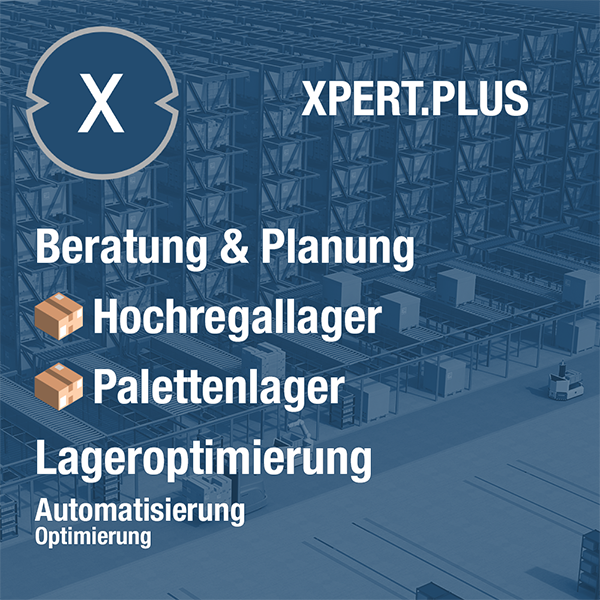
Xpert.Plus warehouse optimization - high-bay warehouses such as pallet warehouses consulting and planning
We are there for you - advice - planning - implementation - project management
☑️ SME support in strategy, consulting, planning and implementation
☑️ Creation or realignment of the digital strategy and digitalization
☑️ Expansion and optimization of international sales processes
☑️ Global & Digital B2B trading platforms
☑️ Pioneer Business Development
I would be happy to serve as your personal advisor.
You can contact me by filling out the contact form below or simply call me on +49 89 89 674 804 (Munich) .
I'm looking forward to our joint project.
Xpert.Digital - Konrad Wolfenstein
Xpert.Digital is a hub for industry with a focus on digitalization, mechanical engineering, logistics/intralogistics and photovoltaics.
With our 360° business development solution, we support well-known companies from new business to after sales.
Market intelligence, smarketing, marketing automation, content development, PR, mail campaigns, personalized social media and lead nurturing are part of our digital tools.
You can find out more at: www.xpert.digital - www.xpert.solar - www.xpert.plus



